Nakajima
Ki-44 II
'Tojo'
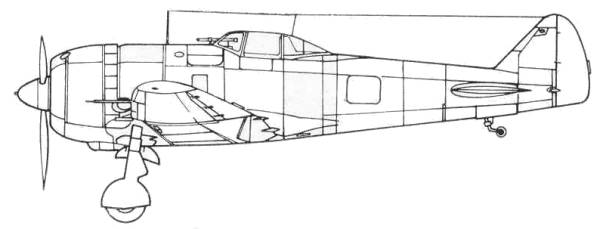
Shortly after instructing Nakajima to proceed with the design of the Ki-43 they also received a specification for an interceptor. It was a pronounced departure from previous Japanese standards, speed and climb rate were emphasized at the expense of maneuverability. The Ki-44 as the project became known, was required to climb to 13,125 feet in less than five minutes and to reach 373 mph at that altitude and carry two 7.7mm and two 12.5mm machine guns. Three prototypes were built using the Nakajima 1.250 hp double row radial that was developed for use on bomber aircraft. The first prototype was flown in August 1940. early flight tests were successful a its characteristics found to be acceptable in spite of its high wing loading and high landing speed. However performance was found lacking in both top speed and climb rate. Various aerodynamic modifications were tried until it finally met the specification. Seven preproduction aircraft were then built using all the modifications and the second and third prototypes were brought up to the same standard and were handed over to an experimental squadron. In September 1942 all tests were completed and they were accepted by the JAAF. An initial batch of Ki44's already in production were retroactively designated Model 1A and they were followed by the model 1B which had its armament increased to four 12.5mm machine guns. Although the Ki-44 I was the fastest Japanese fighter in service it still couldn't catch the Ki-46 reconnaissance plane and the JAAF was anxious to increase the Ki-44's speed and rate of climb. Starting in August 1943 five Ki-44 II prototypes and three production machines were built and they replaced the Ki-44 I on the assembly line. The II used the HA-109 radial that developed 1.450 hp with 1,520 hp available for take off. These aircraft operated in Japan where the Doolittle raid had demonstrated the need for an effective force of interceptor fighters.
The Kit

The Hasegawa kit comes in a large top open box befitting of the scale, with their usual lovely artwork on the top. Inside the box are two large bags of parts molded in light gray and one small bag of clear parts. Each of the bags has several sprues enclosed which is not always the best way as parts can get scuffed in shipment. While this is usually not a big deal it can make more work if you are doing a natural metal finish. The parts are molded crisp and clean and I had to look hard to find even a hint of flash on a couple parts. The surface detail consists of recessed panel lines and rivet detail with some raised detail where appropriate. I found no signs of any surface irregularities on any of the main air frame parts. Mold parting lines on double sided parts are minimal and should be easy to clean up.
All of the control surfaces are molded in the neutral position but the flaps are supplied and separate items. The fabric control surfaces are handled a little differently on this kit, instead of deep scallops and ridges the surfaces are flat and smooth, as they should be and only external stiffeners are depicted. The engine is well appointed and needs only ignition wires to make it pop. The cowl has the option of open or closed flaps. The cockpit is well appointed and should satisfy most, the small opening at the top will make any extra detail hard to see anyway. The kit comes with a nice pilot figure similar to the one in the Ki-84 kit and this one has alternative heads, either with or without oxygen mask. If you use him you won't see hardly any of the cockpit detail.
The propeller has separate blades but they are keyed to set them at the proper angle. There is a spar for the wing assembly to insure a proper dihedral on the wing. There are some ejector pin marks in the cockpit that will show but they are very faint and should be easy to fix if you find them objectionable . There are also some on the inside of the gear doors but again they are very faint. The tires are not weighted. The kit comes with two drop tanks. see photos below.
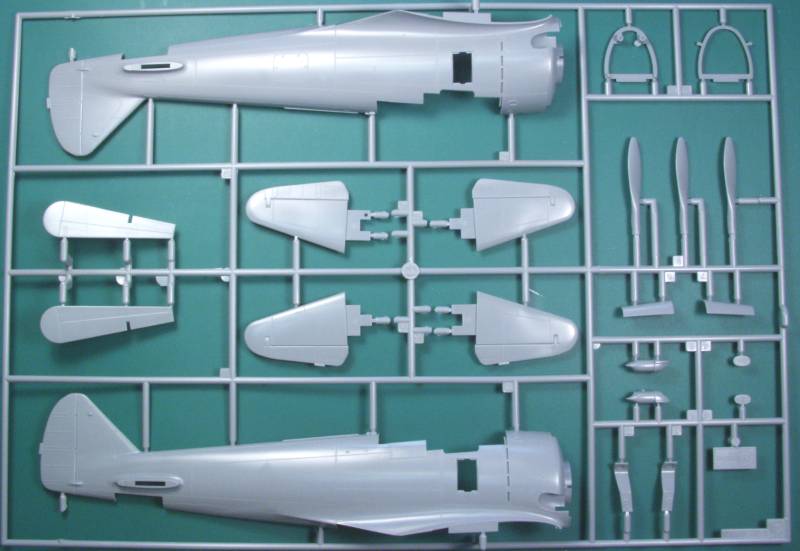
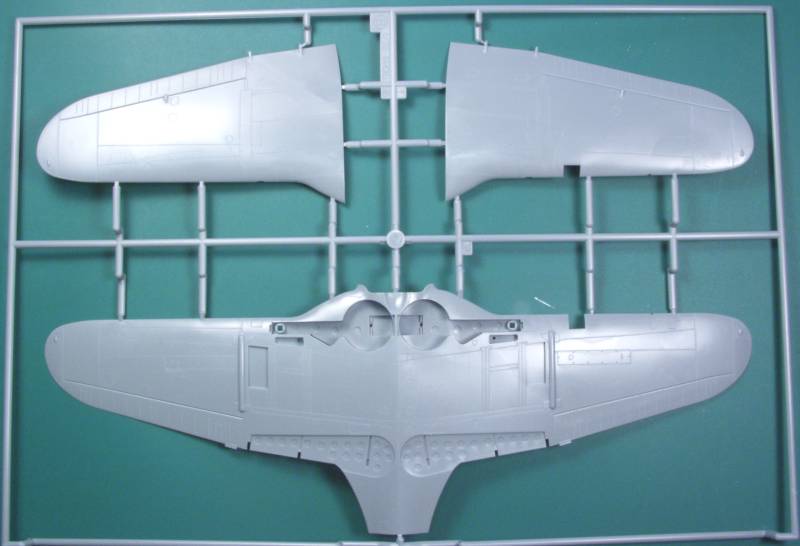
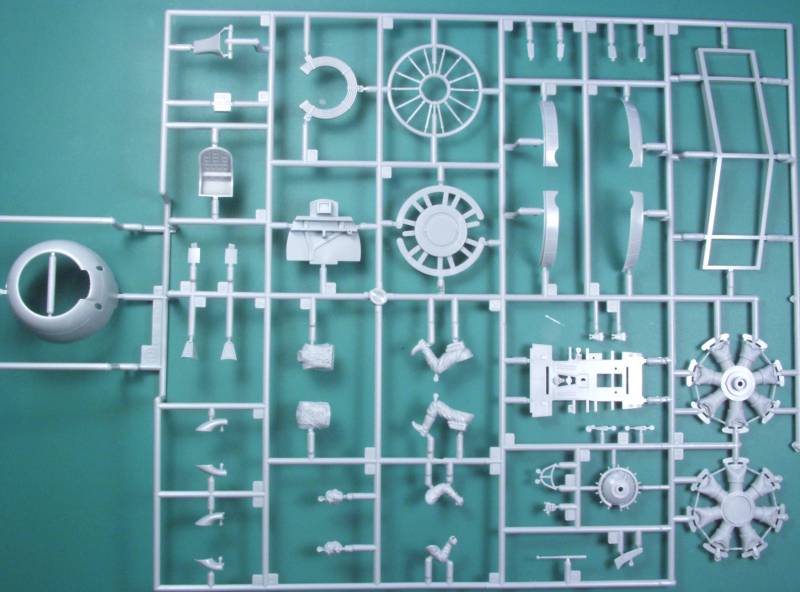
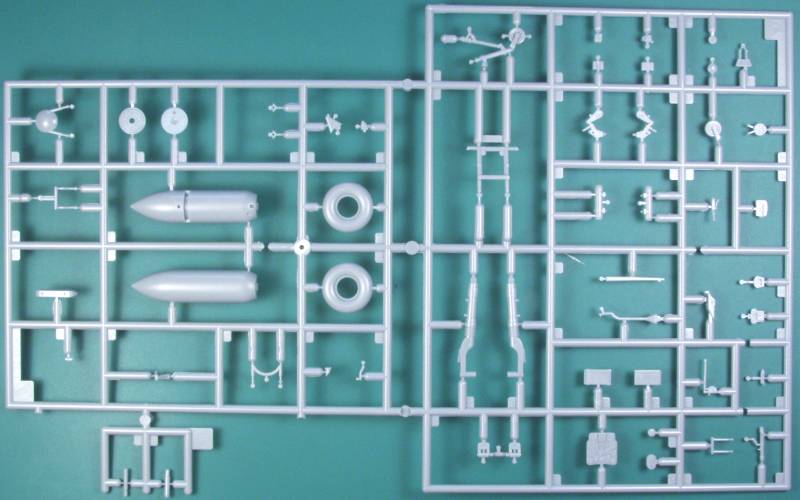
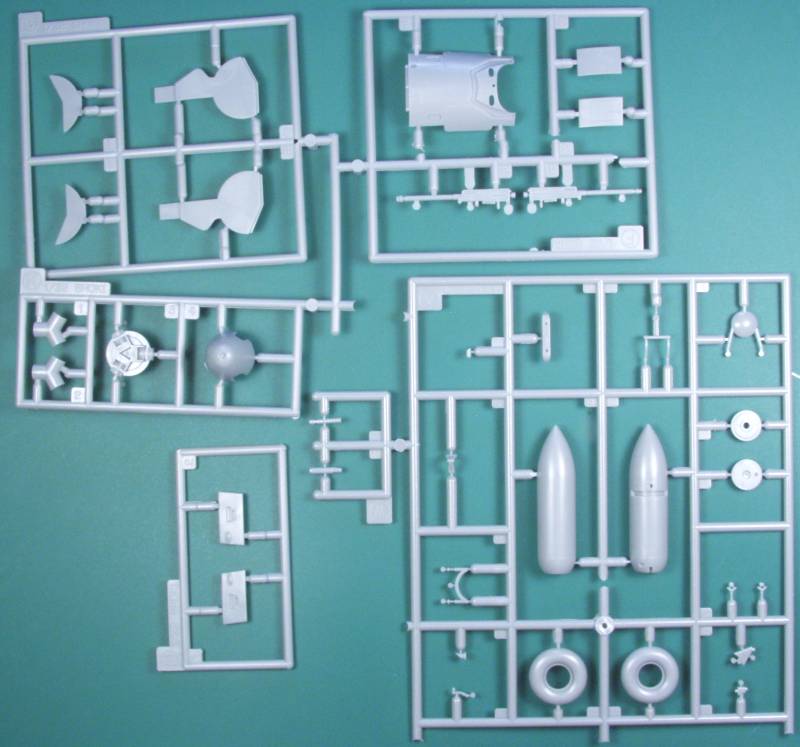
The clear parts are thin and crystal clear with little distortion, two windscreens are supplied, one for telescopic sight equipped aircraft and one for those with a reflector sight. The reflector sight is molded in clear and the clear parts also include the landing light lens and navigation light lenses. See below.
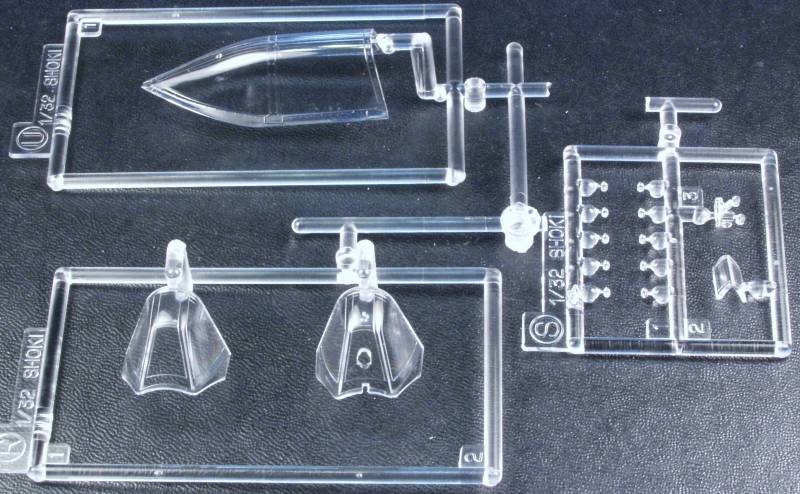
The decals are on one huge sheet that was longer than my flat bed scanner. I got most of the important stuff in the scan. The decals look a bit thinner than some from Hasegawa and the white is white and not cream colored that was prevalent for years. If it was me I wouldn't use either the white or the yellow leading edge decals, it just makes life easier to paint them on. Instrument panel instruments are included as are some stencils and spurious markings. The decals provide markings for two aircraft from the same squadron and group. See below.
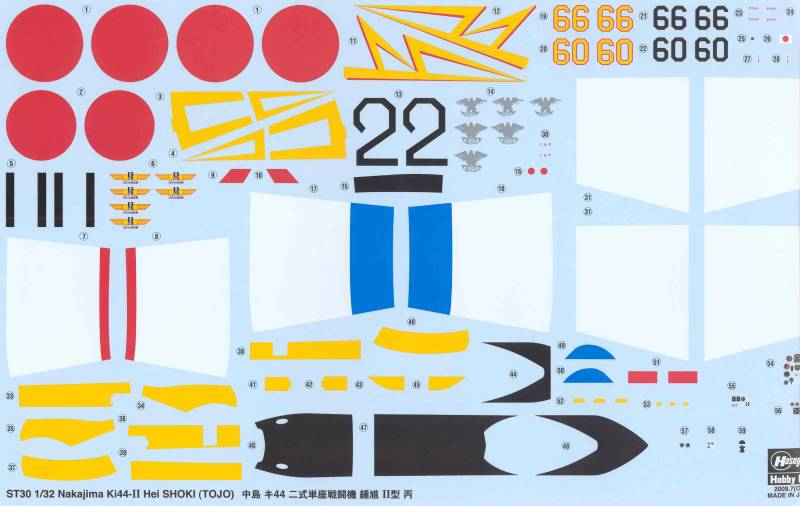
The instructions come in the form of an A4 sized booklet which is stapled. It is twelve pages long. Page one has a brief history in English and Japanese, page two has the part map and paint chart with the usual Gunze numbers, and generic paint names. pages three through nine are assembly steps, pages ten and eleven are painting and marking instructions and the last page has decal installation basics and the usual safety and health warnings.
After Market Goodies
Eduard offers a couple of color photo etch sets for the kit (Interior 32652, exterior 3223 and a Big ED set B3281, a mask set JX095), Scale Aircraft conversions has a white metal landing gear set 932032) for those so inclined and Quick Boost has an exhaust set (32072)
Conclusions
This is another great kit from Hasegawa the assembles well and has a good level of detail and should be no problem for modelers of all levels, highly recommended.
Links to kit build or reviews
Builds are available here, and here.
References
Japanese Aircraft of the Pacific War by R.J. Francillon
Back to the 1/32 Scale Japanese Aircraft Page